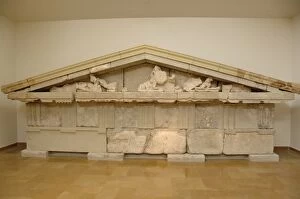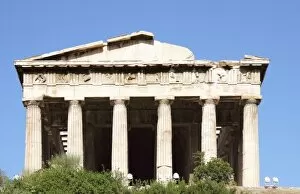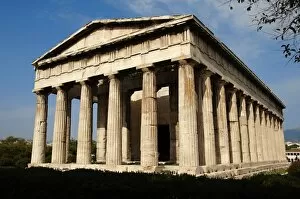Triglyph Collection
Triglyph: A Glimpse into Ancient Greek Architecture Step back in time to ancient Greece
All Professionally Made to Order for Quick Shipping
Triglyph: A Glimpse into Ancient Greek Architecture Step back in time to ancient Greece, where the architectural wonders of Delphi and Athens still stand as testaments to a bygone era. Among these remarkable structures is the Athenian Treasury, built between 510 and 480 B. C. , showcasing intricate triglyphs that adorn its façade. The significance of triglyphs becomes even more apparent when we explore THESEION-HEPHAISTEION, a temple constructed in V century B. C. Athens. Here, the Doric Order takes center stage with its distinctive columns and friezes featuring precisely carved triglyphs. To truly appreciate this architectural element, one can refer to illustrations from I Quattro Libri dell'Architettura (The Four Books of Architecture), which provide detailed depictions of the Doric Order's triglyph design. These drawings offer valuable insights into how ancient Greeks incorporated this motif into their buildings. Interestingly enough, even Sir John Soane (1752-1837), an esteemed British architect renowned for his neoclassical designs, found inspiration in triglyphs. His imaginative creation—a Canine Residence—showcased his fascination with Greek architecture and included elements reminiscent of these iconic motifs. Moving beyond mainland Greece, we find ourselves at Cape Sounion's Temple of Poseidon. Constructed between 444 and 440 B. C. , this majestic structure boasts imposing columns adorned with meticulously crafted triglyphs that have stood the test of time. Not limited to temples alone, triglyphs also graced monumental entrances like those found at Propylaea in Athens—an awe-inspiring gateway leading to sacred spaces within ancient Greece. Venturing further south to Sicily's Valley of the Temples brings us face-to-face with yet another example—the Temple of Concordia—with its limestone pediment depicting scenes from mythology through intricately carved triglyph patterns. Even beyond Greece's borders, triglyphs found their way into architectural masterpieces.













